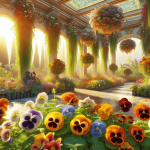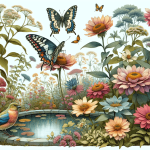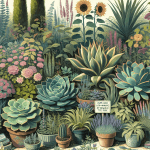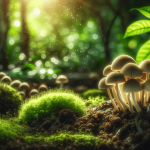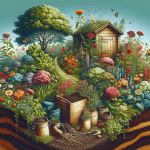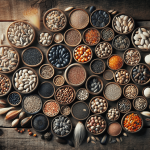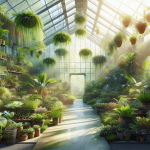This post may contain affiliate links. As an Amazon Associate, we may earn commissions from qualifying purchases.
Embarking on the journey of creating a shade garden can be both exciting and challenging, but knowing the right plants to choose can turn any shaded area into a lush, verdant retreat. This article is your go-to guide for selecting the perfect inhabitants for your garden’s shaded spots. From the soothing greens of ferns to the delicate blooms of hostas, we’ll explore a variety of plants that thrive away from the sun’s full glare, ensuring your garden remains a beautiful, serene space no matter how much shade it gets. Let’s transform those dim corners into your own slice of paradise with the best plants for a shade garden.
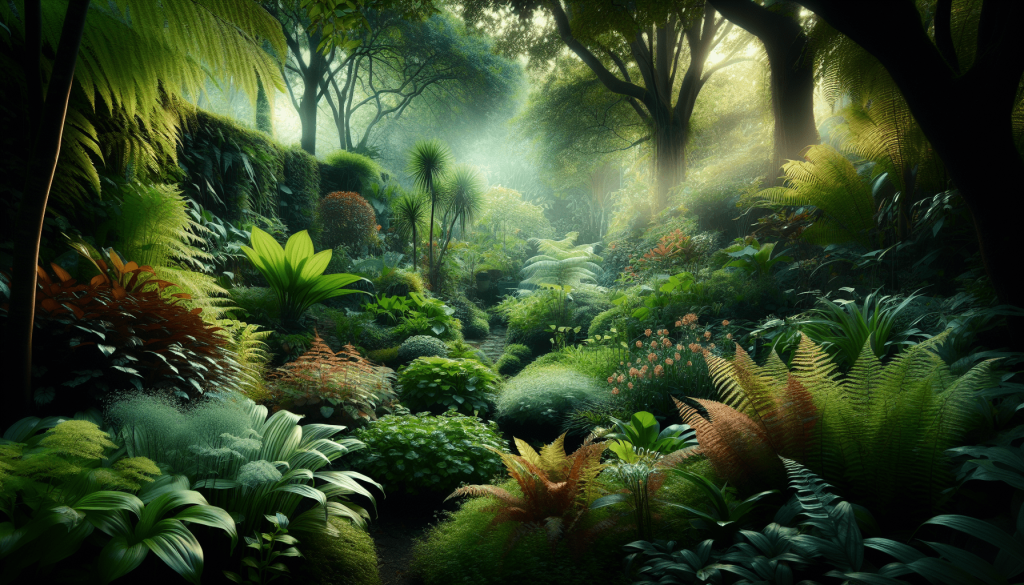
Understanding Shade in the Garden
Creating a lush and vibrant garden in the shade may seem challenging at first, but with the right knowledge and plant selection, you can transform shaded areas into a beautiful oasis. Let’s dive into understanding Shade in the garden, which is pivotal to selecting the best plants for your space.
Types of shade: light, partial, full, and deep
Shade in the garden isn’t a one-size-fits-all condition; it varies in intensity and can be categorized into four main types: light, partial, full, and deep. Light shade refers to areas that receive indirect sunlight or dappled sunlight for most of the day. Partial shade areas are typically exposed to direct sunlight for just a few hours each day. Full shade areas receive no direct sunlight but aren’t entirely dark, often having access to bright indirect light. Deep shade areas are the most challenging, receiving little to no sunlight throughout the day.
How to assess your garden’s shade level
Assessing your garden’s shade level involves observing the amount of sunlight the area receives throughout the day. Notice if the sunlight is direct, indirect, or blocked completely. Trees, buildings, and even the directional orientation of your garden (north, south, east, or west) can significantly affect the level of shade. Regular observation at different times of the day and year will give you a good understanding of your garden’s shade levels.
Importance of soil moisture and quality in shade gardening
Soil condition plays a crucial role in shade gardening. Shade areas often face challenges with moisture—either too much due to reduced evaporation or too little in densely rooted areas under trees. Ensuring good drainage while maintaining soil moistness is key. Incorporate organic matter to improve soil structure and water retention, making it conducive for plants thriving in shaded conditions.
Hostas
Hostas are a staple in shade gardens, beloved for their lush foliage and variety.
Variety of sizes and colors
Hostas come in an array of sizes from miniature varieties that tuck neatly into small spaces to large, striking specimens that can command the foreground of any garden design. Their colors span from bright greens to deep blues, and even variegated forms with white or yellow patterns. Such diversity makes them versatile for different garden themes and designs.
Soil and moisture requirements
These shade-loving plants thrive in well-drained, moist soil rich in organic matter. Though tolerant of various soil types, they perform best in conditions that mimic their native forest floors—slightly acidic and fertile. Regular watering helps maintain the necessary moisture level, especially in warmer months.
Companion plants for hostas in a shade garden
Hostas pair well with ferns, astilbes, and bleeding hearts, creating a varied yet harmonious shade garden. Such combinations offer a play of textures, colors, and heights, making the garden interesting throughout the growing season.
Ferns
Ferns add elegance and texture to shade gardens with their graceful fronds and variety.
Types of ferns suitable for shade
Many fern species flourish in shaded conditions. Lady ferns and Japanese painted ferns are popular for their adaptability and decorative qualities. Christmas ferns and Maidenhead ferns stand out for their evergreen nature, providing year-round interest.
Care and maintenance tips for ferns
Ferns generally require moist, well-draining soil rich in organic matter. They benefit from regular watering, especially in dry conditions, and an annual application of compost to support their growth. While most ferns are low maintenance, removing dead fronds can promote healthier growth and reduce disease risks.
Creating texture and depth with ferns in a shade garden
The unique textures and forms of ferns can create visual depth in a shade garden. Planting ferns of different heights and frond styles together, or incorporating them with contrasting plants like hostas, can enhance the layered effect, making the shaded area appear fuller and more dynamic.
Hydrangeas
Hydrangeas are beloved for their large, showy blooms and ease of care in shaded areas.
Best types of hydrangeas for shade
Lacecap and mophead hydrangeas (Hydrangea macrophylla), as well as oakleaf hydrangeas (Hydrangea quercifolia), are particularly suited for partial shade, where they can receive gentle morning sunlight with protection from the harsh afternoon rays.
Watering and fertilizing needs
Hydrangeas require consistently moist soil, necessitating more frequent watering during dry spells. A layer of mulch can help retain soil moisture. They benefit from a balanced, slow-release fertilizer applied in early spring to support both foliage and bloom development.
Pruning and care for shade-grown hydrangeas
Pruning needs vary among hydrangea types; some bloom on old wood, while others on new. Generally, pruning in late winter or early spring (depending on the variety) encourages healthy growth and flowering. Removing spent flowers and dead branches can also improve plant vigor.
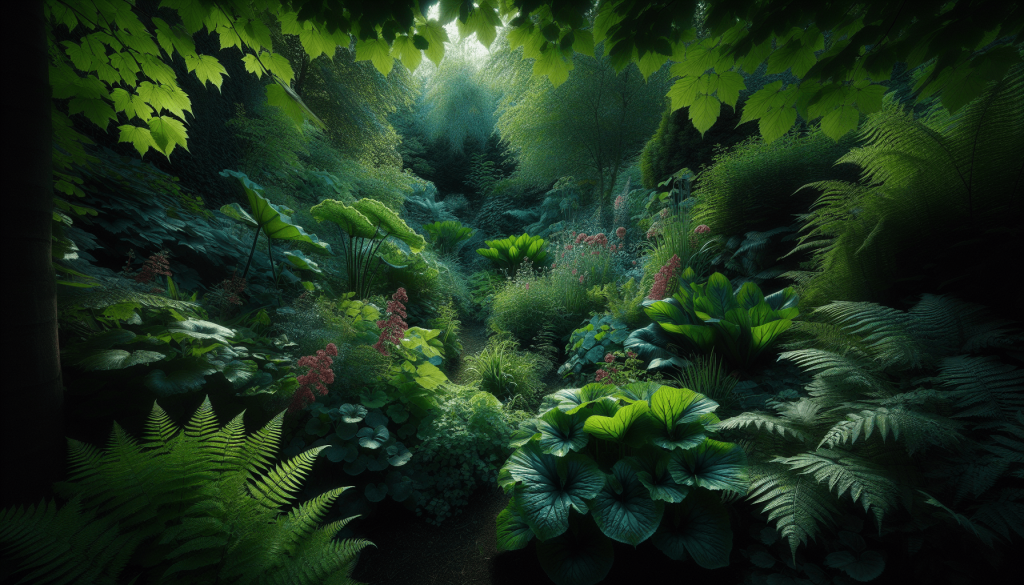
Astilbe
Astilbe is a favorite among shade gardeners for its feathery plumes of flowers and fern-like foliage.
Color and height varieties
Astilbes offer colors ranging from white and pink to deep red and purple, with heights that can vary from compact, foot-tall plants to striking specimens reaching up to four feet. This variety allows for creative use in the shade garden, providing both ground cover and vertical interest.
Soil and watering requirements
Thriving in moist, well-drained soil, astilbes need regular watering, especially in dry conditions, to prevent wilting. They prefer slightly acidic to neutral soil rich in organic matter. Ensuring proper soil condition and moisture can lead to a spectacular bloom and healthy growth.
Using astilbe to add color to a shade garden
With their vibrant colors and distinctive texture, astilbes can brighten any shaded garden area. Planting them in groups or drifts can enhance their impact, creating a swath of color that draws the eye and enlivens the garden’s understory.
Bleeding Hearts
Iconic for their heart-shaped flowers, bleeding hearts are a captivating addition to the shade garden.
Planting and care for bleeding hearts
Bleeding hearts favor cool, moist conditions, thriving in rich, well-draining soil. They can be planted in fall or early spring and benefit from a layer of mulch to retain soil moisture. While they can tolerate full shade, a bit of dappled sunlight can enhance their flowering.
The significance of timing and soil
Timing the planting of bleeding hearts in early spring or fall allows them to establish before experiencing the extremes of summer heat or winter cold. The soil should be amended with compost or organic matter to ensure the richness and drainage they favor.
Complementary plants for bleeding hearts in a shade setting
Bleeding hearts pair well with ferns and hostas, which offer contrasting foliage textures. After bleeding hearts finish blooming in early summer, their companions can maintain visual interest in the garden through the rest of the growing season.
Hellebores
Hellebores are renowned for their early spring blooms and resilience in shaded gardens.
Why hellebores are perfect for early spring color
Blooming even through snow in late winter to early spring, hellebores add much-needed color and interest to the garden at a time when most plants are dormant. Their downward-facing, saucer-shaped flowers in shades of white, pink, purple, and green are a welcome sight to winter-weary eyes.
Care tips for a thriving plant
Hellebores prefer well-draining soil enriched with organic matter and can thrive in partial to full shade. They require minimal maintenance once established, but removing old leaves in late winter can help prevent disease and make new blooms more visible.
Combining hellebores with other shade-loving plants
Pairing hellebores with spring bulbs like daffodils and tulips can extend the bloom season in your shade garden. Later in the season, hostas and ferns can take over as hellebores recede, ensuring continuous garden interest.
English Ivy
English ivy brings versatility and evergreen beauty to shaded gardens and landscapes.
Growing conditions and propagation
Thriving in partial to full shade, English ivy prefers moist, well-drained soil. It’s easily propagated by cuttings, making it simple to spread and fill garden areas as ground cover or even as a climbing vine for walls and fences.
Uses in the landscape and as ground cover
English ivy can be used to create a lush, green carpet under trees or along garden beds, offering texture and year-round interest. When allowed to climb, it can cover unsightly walls or fences, providing a natural backdrop for other plants.
Managing invasive tendencies
While English ivy can be a valuable addition to the garden, it’s also known for its invasive nature in some regions. Regular pruning and monitoring are necessary to keep it under control and prevent it from overtaking other plants in the garden.
Japanese Maples
Japanese maples are a striking choice for adding structure, color, and elegance to shade gardens.
Suitable varieties for shaded areas
With varieties ranging in size, leaf color, and shape, there’s a Japanese maple to fit any shade garden setting. Dwarf varieties are particularly suited to small spaces or containers, offering a compact burst of color and texture.
Care requirements including soil and watering
Japanese maples prefer well-drained, slightly acidic soil and should be planted in a location that offers protection from harsh winds and scorching sun. They require regular watering, especially during dry spells, to maintain their health and vibrant foliage.
Design ideas for incorporating Japanese maples into shade gardens
Japanese maples can serve as a focal point in the shade garden, with their dramatic foliage offering a counterpoint to the softer textures of ferns and hostas. Planted near a water feature or along a path, they can create serene and picturesque scenes within the garden.
Tips for Successful Shade Gardening
Mulching to retain soil moisture
Applying a layer of mulch around shade plants helps retain soil moisture, suppress weeds, and maintain a cool root environment. Organic mulches, like shredded bark or leaf mold, also improve soil quality as they decompose.
Choosing plants based on the depth of shade
Selecting plants appropriate for your garden’s specific shade conditions is crucial for success. Some plants, like hostas and ferns, thrive in varying levels of shade, while others may require more specific conditions to flourish.
Incorporating hardscape elements for structure and contrast
Incorporating hardscape elements like stone paths, benches, and sculptures can add structure and visual interest to shade gardens. These features provide contrast to the soft textures of shade-loving plants, making the garden more dynamic and enjoyable.
Creating a beautiful and thriving shade garden is entirely possible with the right plants and care. By understanding your garden’s specific conditions and selecting plants suited to those conditions, you can transform shaded spaces into vibrant, lush retreats. Remember, gardening is an ongoing journey of learning and discovery, so take your time and enjoy the process of creating your shade garden oasis.

